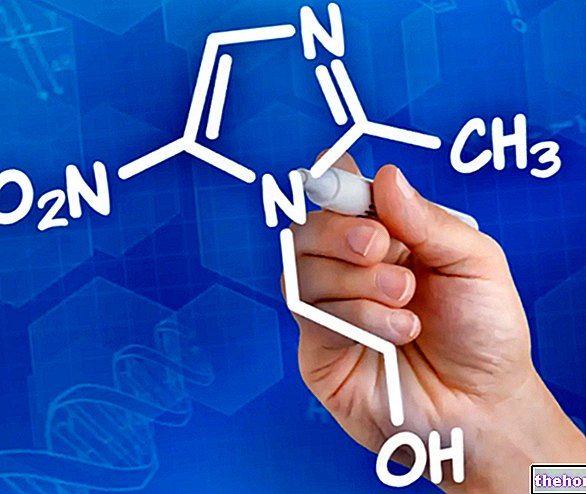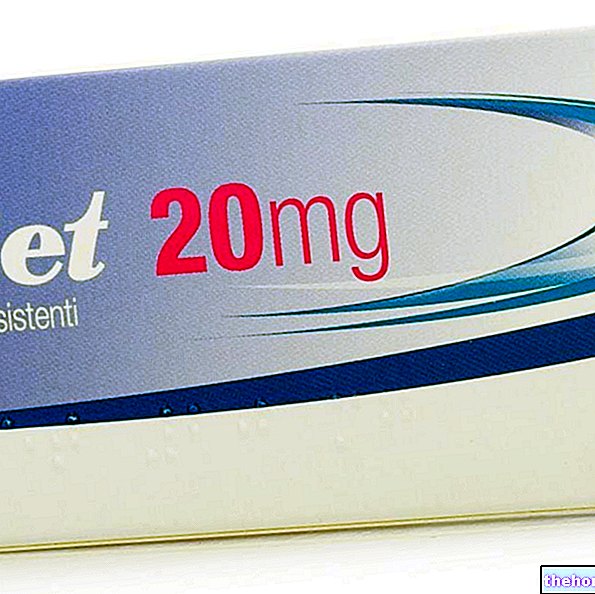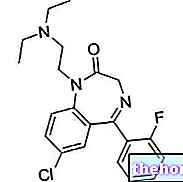Cisplatin is a chemotherapy drug belonging to the class of alkylating agents. It is considered a powerful antitumor agent, so much so that it is included in the list of essential drugs drawn up by the World Health Organization;

Therapeutic indications
Cisplatin can be used alone, or in combination with other anticancer agents, for the treatment of various types of cancer, including:
- Ovarian cancer, advanced or metastatic;
- Bladder cancer, advanced or metastatic;
- Testicular cancer, advanced or metastatic;
- Advanced or metastatic small cell and non-small cell lung cancer
- Squamous cell cancer of the head and neck, advanced and metastatic.
Cisplatin is particularly effective in the treatment of testicular cancer: when used in combination with bleomycin (a cytotoxic antibiotic) or vinblastine (an antimitotic) greatly increases the chances of recovery.
Cisplatin can also be used in combination with Auger therapy, a particular type of radiotherapy which uses low-energy electron beams to irradiate the malignant cells that make up the tumor.
Studies carried out and clinical efficacy
1. Combination therapy with cisplatin in the treatment of advanced non-small cell lung cancer
Zhongliu Yaoxue, 3, 293-296
Observation on the clinical efficacy of pemetrexed and docetaxel, respectively combined with cisplatin in the treatment of advanced non- € ‹small cell lung cancer
Ma, Qing; Zhang, Junfeng; Li, Jianjun; Bai, Qinxia; Liu, Yantang
Cisplatin is often used in combination with other anticancer drugs.
This study was conducted to establish the efficacy and safety of combination therapies with pemetrexed, docetaxel and cisplatin.
It was performed on 97 patients with advanced non-small cell lung cancer. The patients were divided into two groups; one group was given cisplatin in combination with pemetrexed (an agent antimetabolite), while the other group was given cisplatin in combination with docetaxel (an agent antimitotic).
The study showed that the two therapeutic strategies have the same efficacy. However, pemetrexed and cisplatin therapy showed a significantly lower incidence rate of side effects - such as leukopenia, anemia, thrombocytopenia, nausea and vomiting - than docetaxel therapy.
2. Combination therapy with cisplatin, fluorouracil and elemi emulsion in the treatment of advanced gastric cancer
Zhongguo Yaoye, 23, 53-55
Clinical evaluation on elemi oral emulsion combined with cisplatin and fluorouracil in treating advanced gastric cancer in 64 cases
Come on, Xiaohui
L"elemi is an oleoresin obtained by cutting the trunk of plants belonging to the family of Burseraceae.
In this study 64 patients - suffering from advanced gastric cancer - underwent a combination therapy based on cisplatin and fluorouracil to which was added the oral administration of an "elemi emulsion. The study showed that the drug-emulsion combination can significantly improve the curative efficacy of therapy without increasing adverse reactions. In fact, in therapy with cisplatin and fluorouracil alone, the one-year survival rate was found to be 45%; by adding the emulsion, however, the survival rate seems to increase to 56%.
3. Alleviation of the side effects caused by cisplatin following the intake of Vetiver oil
Food and Chemical Toxicology, 81, 120-128
Vetiver oil (Java) attenuates cisplatin- € ‹induced oxidative stress, nephrotoxicity and myelosuppression in Swiss albino mice
Sinha, Sonali; Jothiramajayam, Manivannan; Ghosh, Manosij; Jana, Aditi; Chatterji, Urmi; Mukherjee, Anita
The use of cisplatin, despite its effectiveness, is limited due to the heavy side effects it entails.
The purpose of this study was to investigate the protective effects of "Java vetiver oil. The evaluation was conducted on albino Swiss mice given oral vetiver oil for seven days prior to cisplatin administration. After this period the drug was administered. The study demonstrated a significant attenuation of renal toxicity and myelosuppression induced by cisplatin. This study therefore highlights interesting protective capacities of vetiver oil against the side effects induced by cisplatin therapy.
Warnings
Cisplatin must be administered under close supervision of a physician who specializes in the administration of anticancer chemotherapeutic agents.
The drug is packaged in dark bottles as it is photosensitive; it must therefore be stored away from light.
Cisplatin is able to react with metallic aluminum forming a black platinum precipitate. Therefore, the drug should be administered avoiding the use of needles, syringes and catheters containing aluminum.
Before, during and after the entire therapy period they must be monitored the kidney functions, liverworts, hematopoietic (amount of blood cells) and the serum electrolytes (calcium, magnesium, sodium, potassium).
Interactions
Administration of cisplatin concomitantly with other substances nephrotoxic (ie toxic to the kidneys) - such as, for example, cephalosporins, aminoglycosides or contrast media - potentiates the toxic effect on the kidneys.
During and after treatment with cisplatin it is recommended to use with caution other drugs excreted mainly by the kidney.
Concurrent administration of drugs ototoxic (toxic to the ear) - such as aminoglycosides and loop diuretics - can intensify the toxicity of cisplatin to the ear.
L"ifosfamide (a antitumor alkylating agent) may increase the risk of hearing loss from treatment with cisplatin.
The contemporary use of myelosuppressive agents or the radiotherapy they can increase the myelosuppressive activity of cisplatin.
If cisplatin is administered in combination a vinblastine or bleomycin can cause Raynaud's phenomenon.
Concomitant administration of cisplatin e docetaxel can induce neurotoxic effects (toxic to the nervous system) more serious than those induced by the single intake of the two drugs.
The effectiveness of cisplatin can be reduced by taking some chelating agents, such as, for example, the penicillamine.
Side effects
The side effects due to the administration of cisplatin can vary according to the administered dose and according to whether the drug is used in monotherapy or in combination chemotherapy. Furthermore, there is a great variability of response even between one individual and another.
Below are some of the side effects of cisplatin treatment.
Nephrotoxicity
Cisplatin is extremely nephrotoxic (toxic to the kidney), especially in those patients with pre-existing kidney dysfunction. The nephrotoxicity of cisplatin is a dose-limiting side effect: means that this type of toxicity reduces the dose of drug that can be administered to the patient.
Neurotoxicity
There neurotoxicity caused by cisplatin is dose-dependent, that is, it increases with the increase in the dose of the drug taken. It can manifest itself with the onset of paresthesia (loss of sensation in limbs or other areas of the body), of areflexia (total loss of reflexes) and of loss of proprioception, that is, loss of the ability to perceive and recognize the position of one's body in space.
Regular neurological checks should be performed during and after cisplatin treatment.
Ototoxicity
It usually manifests itself in the form of tinnitus (whistling, buzzing, rustling or throbbing in the ear) and / or with hearing loss. Hearing loss can be unilateral or bilateral and tends to become more severe with repeated doses. There are no effective treatments to prevent this side effect, which may be more pronounced in children than in adults.
A careful audiometric check must be performed before starting cisplatin therapy and between doses.
Myelosuppression
Cisplatin can induce myelosuppression, that is to favor the bone marrow suppression. This deletion results in a reduced hematopoiesis (reduced synthesis of blood cells).
Decreased blood cell synthesis can lead to:
- anemia (reduced amount of hemoglobin in the blood);
- leukopenia (reduced number of white blood cells) resulting in increased susceptibility to contracting infections;
- thrombocytopenia (reduced number of platelets) with increased risk of bleeding.
Myelosuppression is a side effect dose-dependent.
Nausea and vomit
Cisplatin is a powerful one emetogenic (induces vomiting) and - unless antiemetic (antivomiting) drugs are administered - this side effect almost always occurs.
Generally, antiemetics (such as, for example, ondansentron) in combination with corticosteroids (such as, for example, dexamethasone).
Electrolyte disturbances
Cisplatin can cause hypomagnesemia, hypokalemia And hypocalcemia, or - respectively - a decrease in the levels of magnesium, potassium and calcium in the blood.
Cardiac pathologies
Cisplatin therapy can provoke cardiac arrhythmias, included bradycardia And tachycardia. In particular, these effects have been observed when cisplatin is used in combination with other cytotoxic drugs.
It can manifest itself hypertension and, in some cases, it can occur myocardial infarction even a few years after the end of therapy.
Vascular pathologies
It is very common for it to occur phlebitis in the area where cisplatin is injected.
They could also occur cerebral ischemia or myocardium.
Respiratory pathologies
They may occur following treatment with cisplatin dyspnea, respiratory failure and, in some cases, pneumonia.
Hepato-biliary disorders
Cisplatin can cause impaired liver function and increased blood levels of transaminases (enzymes used as indicators to detect possible liver damage) and bilirubin (yellow pigment contained in the bile, produced by the catabolism of hemoglobin).
Skin and subcutaneous tissue disorders
They can manifest themselves erythema, ulcers and skin rashes in the area where cisplatin was injected. Also, it can arise alopecia.
Mechanism of action
Cisplatin - like all alkylating agents - is able to form bonds with the two strands that make up DNA.

DNA is made up of two strands joined around each other to form a double helix.
DNA is made up of many monomers, called nucleotides. There are 4 types of nucleotides: adenine (A), guanine (G), cytosine (C) and thymine (T), which combine with unique AT (adenine-thymine) and CG (cytosine-guanine) pairs held together by hydrogen bonds .
The sequence of bases present along the DNA molecule carries the genetic information.
The double strand of DNA is made up of four fundamental units called nitrogenous bases: these molecules are cytosine, thymine, adenine and guanine. Cisplatin exerts its cytotoxic action by binding to a nitrogen atom present in the guanine structure, but it is also able to form bonds with adenine. The binding of cisplatin to the DNA strands prevents this from being transcribed and replicated, condemning the cells to meet the mechanism of programmed cell death (apoptosis).
Method of Use - Dosage
Cisplatin is a clear, light yellow liquid. Administration usually takes place for intravenous infusion within 6-8 hours.
The dose of cisplatin administered depends on the type of cancer you intend to treat and whether the drug is used alone or in combination with other drugs.
Monotherapy
Cisplatin alone can be administered in two different ways:
- Single dose, in an amount ranging from 50 to 120 mg / m2 of body surface every 3-4 weeks;
- Fractional doses, in an amount ranging from 15 to 20 mg / m2 per day, for five consecutive days, every 3-4 weeks.
These doses can be administered to both adults and children.
Combination chemotherapy
If cisplatin is used in combination chemotherapy, the administered dose should be reduced. Typically, the usual dose is 20 mg / m2 or more given as a single dose every 3-4 weeks.
In the case of cervical cancer treatment, cisplatin is usually used in combination with radiotherapy. In this case, the usual dose administered is 40 mg / m2 per week, for six weeks.
Due to the renal toxicity of cisplatin, the administered dose needs to be decreased in patients with renal dysfunction.
To avoid, or at least contain, the kidney damage caused by cisplatin, patients should be hydrated with solutions containing chlorides. They can be administered saline diuretics or mannitol to promote continued drug excretion during and after therapy.
Pregnancy and breastfeeding
There are insufficient data on the use of cisplatin by pregnant women, but it is suspected that it may cause severe birth defects.
Studies conducted on animals have however shown reproductive toxicity And transplacental carcinogenicity. Cisplatin can therefore be toxic to the fetus if administered to a pregnant woman, so it is strongly advised to avoid its use.
During and for at least six months after cisplatin therapy ends, precautions should be taken by both sexes to avoid pregnancy.
Since cisplatin is also excreted in breast milk, it is not recommended for use during breastfeeding.
Contraindications
The use of cisplatin is contraindicated in patients allergic to the drug itself or to other platinum-containing compounds.
Cisplatin is contraindicated in patients with myelosuppression, in patients with renal dysfunction and in dehydrated patients. It is also contraindicated in hearing impaired patients.
Discovery of cisplatin
Like many of the discoveries that revolutionized the world of chemistry and medicine, the discovery of the cytotoxic action of cisplatin also happened by chance.
Originally, cisplatin was first described in 1845 by the Italian chemist Michele Peyrone and for a long time was known as "Peyrone chloride".

The experiment was conducted on bacterial cultures of Escherichia coli incubated in a culture medium containing ammonium chloride (necessary for bacterial growth) in a chamber containing two platinum electrodes.
Scientists noted that when the electric field was applied, bacterial replication stopped. The growth of the bacteria was not interrupted, but they no longer grew normally, but abnormally. Scientists deduced that applying the electric field generated chemical species capable of altering bacterial growth and blocking their replication. Rosenberg's studies continued until he came to understand that the cytotoxic action was due to the formation of an organometallic complex: the cisplatin.
Subsequently, numerous studies were carried out to evaluate the potential of cisplatin in the treatment of cancers.
In December 1978, the United States Food and Drug Administration approved the use of cisplatin for the treatment of testicular and ovarian cancer, and the following year it was approved in other European countries.




























